Milling machines are essential equipment in the field of mechanical machining and manufacturing. To ensure stable performance and prolong the lifespan of these machines, regular maintenance and timely replacement of hydraulic oil are crucial. However, not everyone understands why replacing hydraulic oil on time is vital or how to determine the appropriate frequency for this task. In this article, we’ll explore the importance of hydraulic oil, the signs that indicate replacement is needed, and optimal guidelines for replacing hydraulic oil in milling machines.

1. The role of hydraulic oil in milling machines
Hydraulic oil is a specialized fluid that plays a critical role in operating the hydraulic systems of milling machines. These systems rely on hydraulic oil to transmit power, reduce friction between moving parts, cool the machine, and protect components from corrosion. Here are the primary roles of hydraulic oil:
• Power transmission: Hydraulic oil facilitates the transfer of energy from pumps to key components, ensuring precise and stable operation of the milling machine.
• Friction reduction: Acting as a lubricant, hydraulic oil minimizes wear and tear by creating a protective layer between moving surfaces.
• Cooling: Milling machines generate significant heat during operation. Hydraulic oil helps dissipate this heat and prevents overheating.
• Corrosion prevention: Additives in hydraulic oil protect metal components from rust and corrosion caused by environmental factors.
Given these essential functions, the quality and condition of hydraulic oil directly impact the machine’s performance and durability.
2. The importance of timely hydraulic oil replacement
Over time, hydraulic oil deteriorates due to factors such as high temperatures, pressure, and contamination. Failing to replace it on time can lead to several issues:
2.1. Reduced machine performance
Contaminated or degraded hydraulic oil loses its ability to effectively transmit power and lubricate components. This can result in reduced precision, slower operation, and vibrations during machining.
2.2. Increased wear and component damage
Low-quality oil cannot adequately minimize friction or protect surfaces, causing accelerated wear and tear on mechanical parts. This leads to frequent breakdowns and higher repair costs.
2.3. Overheating and shortened machine lifespan
Degraded oil loses its cooling properties, making the milling machine prone to overheating. This accelerates the deterioration of internal components and significantly shortens the overall lifespan of the equipment.
2.4. Risk of unexpected downtime
Neglecting timely oil replacement can cause sudden failures in the hydraulic system, disrupting production processes and resulting in substantial financial losses.
3. How often should hydraulic oil be replaced in milling machines?
The frequency of hydraulic oil replacement depends on various factors, including the type of machine, usage intensity, and operating environment. However, the following general guidelines can help:
3.1. Routine replacement schedule
• For milling machines operating continuously in industrial environments, hydraulic oil should be replaced after 2,000 – 4,000 hours of usage.
• For machines with moderate usage, oil replacement can be scheduled every 6 months to 1 year
3.2. Signs that indicate immediate oil replacement
In addition to regular maintenance, watch for these signs to identify when oil needs to be replaced:
• Oil discoloration: If the oil turns black or cloudy, it indicates contamination or oxidation.
• Unusual odor: A burnt or sour smell from the oil suggests it has lost its lubricating properties.
• Decline in machine performance: Slower operation, reduced precision, or unusual noises from the machine are warning signs.
• Air bubbles in the oil: This indicates that the oil is mixed with air or water, reducing its power transmission capacity.
3.3. Operating environment
Machines working in dusty, high-temperature, or humid environments may require more frequent oil changes, as such conditions accelerate oil degradation.
4. Steps to replace hydraulic oil correctly
To ensure optimal performance when replacing hydraulic oil, follow these steps:
1. Preparation: Turn off the machine and allow it to cool completely before beginning. Use the manufacturer-recommended type of hydraulic oil for your milling machine.
2. Drain the old oil: Open the drain valve to completely remove the old oil. Properly collect and dispose of the used oil according to environmental regulations.
3. Clean the system: Clean the oil reservoir and hydraulic lines to remove any sludge or contaminants.
4. Refill with new oil: Pour the new hydraulic oil into the reservoir up to the recommended level. Avoid overfilling or underfilling.
5. Post-replacement check: Start the machine and monitor the hydraulic system to ensure smooth and stable operation.
5. Choosing the right hydraulic oil
Selecting the right hydraulic oil is as important as replacing it on time. Consider the following factors when choosing oil for your milling machine:
• Viscosity: Ensure the oil viscosity meets the technical specifications of your machine.
• Oxidation resistance: Choose oil with additives that prevent oxidation to extend its lifespan.
• Heat tolerance: Hydraulic oil should withstand high temperatures in demanding environments.
• Reputable brand: Opt for products from trusted manufacturers to ensure quality and reliability.
6. Conclusion
Timely and proper hydraulic oil replacement is a key factor in maintaining the efficiency, durability, and reliability of milling machines. Adhering to regular maintenance schedules, paying attention to signs of oil degradation, and using high-quality oil will save on repair costs and enhance productivity.
If you are looking for premium hydraulic oil products or need advice on maintaining your milling machine, feel free to contact us for expert support!
Read more: Top 5 most popular cnc machines in 2024






